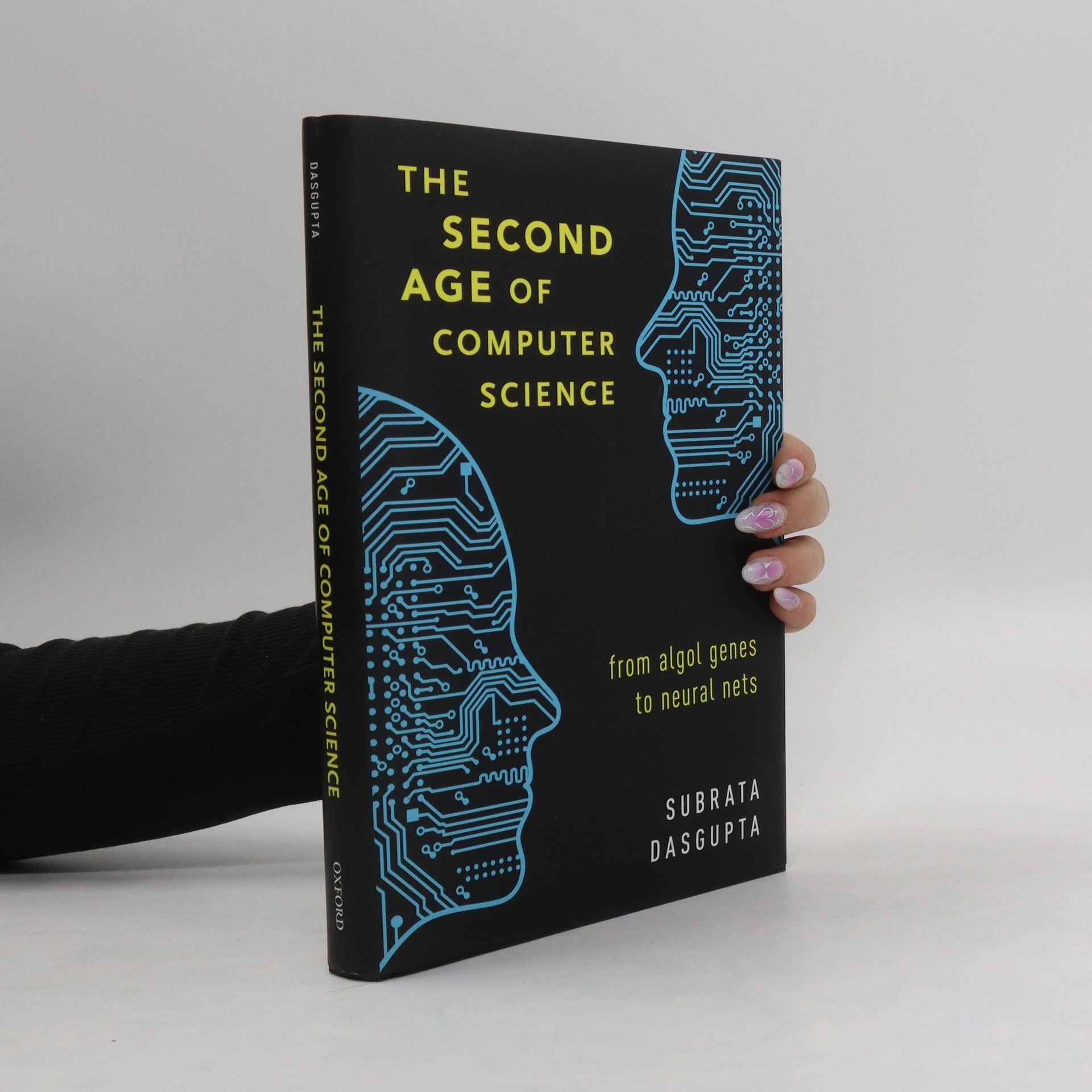Between the genesis of computer science in the 1960s and the advent of the World Wide Web around 1990, computer science evolved in significant ways. The author has termed this period the second age of computer science. This book describes its evolution in the form of several interconnected parallel histories.
Subrata Dasgupta Livres






Computer Science: A Very Short Introduction
- 147pages
- 6 heures de lecture
Over the past sixty years, the spectacular growth of the technologies associated with the computer is visible for all to see and experience. Yet, the science underpinning this technology is less visible and little understood outside the professional computer science community. As a scientific discipline, computer science stands alongside the likes of molecular biology and cognitive science as one of the most significant new sciences of the post Second World War era.In this Very Short Introduction, Subrata Dasgupta sheds light on these lesser known areas and considers the conceptual basis of computer science. Discussing algorithms, programming, and sequential and parallel processing, he considers emerging modern ideas such as biological computing and cognitive modelling, challenging the idea of computer science as a science of the artificial.ABOUT THE SERIES: The Very Short Introductions series from Oxford University Press contains hundreds of titles in almost every subject area. These pocket-sized books are the perfect way to get ahead in a new subject quickly. Our expert authors combine facts, analysis, perspective, new ideas, and enthusiasm to make interesting and challenging topics highly readable.
The Renaissance Considered as a Creative Phenomenon
Explorations in Cognitive History
- 330pages
- 12 heures de lecture
Utilizing cognitive history, this book innovatively merges cognitive science with historical research, offering a fresh perspective on Renaissance studies. It challenges traditional methodologies, providing new insights into the era by examining the interplay between cognitive processes and historical contexts.
The exploration of art and technology reveals how cognitive history can bridge the gap between these two seemingly opposing cultures. Through case studies of both ancient and modern artifacts, the book uncovers the connections and reconciliations that exist, highlighting the interplay between creativity and innovation. This unique perspective invites readers to reconsider the relationship between these disciplines and how they have influenced each other throughout history.
A Cognitive-Historical Approach to Creativity
- 278pages
- 10 heures de lecture
This book delves into the interplay between cognitive processes and historical context in understanding creativity. It examines how creative thought evolves over time and is influenced by cultural and historical factors, offering insights into the mechanisms behind creative expression. By blending cognitive science with historical analysis, it provides a comprehensive framework for exploring the nature of creativity in various contexts.
By using the fresh investigative language of cognitive history, a symbiosis of the methods of cognitive science and historical inquiry, this book departs from almost all previous approaches to Renaissance studies. The Renaissance has attracted the attention of distinguished scholars from many different vantage points -- political, social, economic, intellectual, and cultural. In this volume, Subrata Dasgupta sheds an alternative light on the Renaissance by considering it as a creative phenomenon. To be creative is to make history by producing material and/or abstract artifacts that are both new and consequential; to be creative also entails drawing on history and on the culture of the time. Most significantly, the creative process occurs in individual minds: it is a cognitive process of a very special kind. Beginning with a 'prehistory' set in classical Greece and medieval Islam, this book explores a variety of inventions and discoveries through the 14th-16th centuries, mainly in Italy, in the humanities, painting, architecture, craft technology, anatomy, natural science, and engineering. This book will be of interest not only to Renaissance scholars but also to students interested in Renaissance history and the nature of the creative tradition.
About the Book The Golden Jubilee A family and their significant others gather one summer weekend in a California home to mark the golden jubilee wedding anniversary of a Bengali-American couple Dev and Ruma Intended to be a celebration through conversation and music it becomes as much a time of bonds lost and recovered of confessions and self-discovery of acceptances and rejections and of new decisions The narrative is unveiled in a succession of first person tales told separately by Deb Ruma their daughters Anji and Diya and their visitor from India Debs much loved widowed sister Nanda The story talks about how Indians in America become completely Americanised as they tend to forget their Indian roots especially the new generation Other themes include family politics love and arranged marriages loneliness death A major issue raised in the novel is the impact of homosexuality especially how it is viewed by different people About the Author Subrata Das Gupta Subrata Dasgupta a multidis
Bindungsstil: Angst, Depression und Aggression von College-Studenten
- 216pages
- 8 heures de lecture
Das vorliegende Buch befasst sich mit dem Bindungsstil von Hochschulstudenten und dessen Auswirkungen auf ihre Aggression, Angst und Depression. Der hier betrachtete Bindungsstil wurde von Bartholomew und Horowitz (1980) in vier Typen eingeteilt, nämlich in den sicheren, den besorgten, den ablehnenden und den ängstlichen Bindungsstil. Die Stichprobe der aktuellen Forschungsarbeit waren College-Studenten. Die Ergebnisse zeigten signifikante Unterschiede zwischen den Bindungsstilen und ihre Auswirkungen auf die hier betrachteten negativen Emotionen.